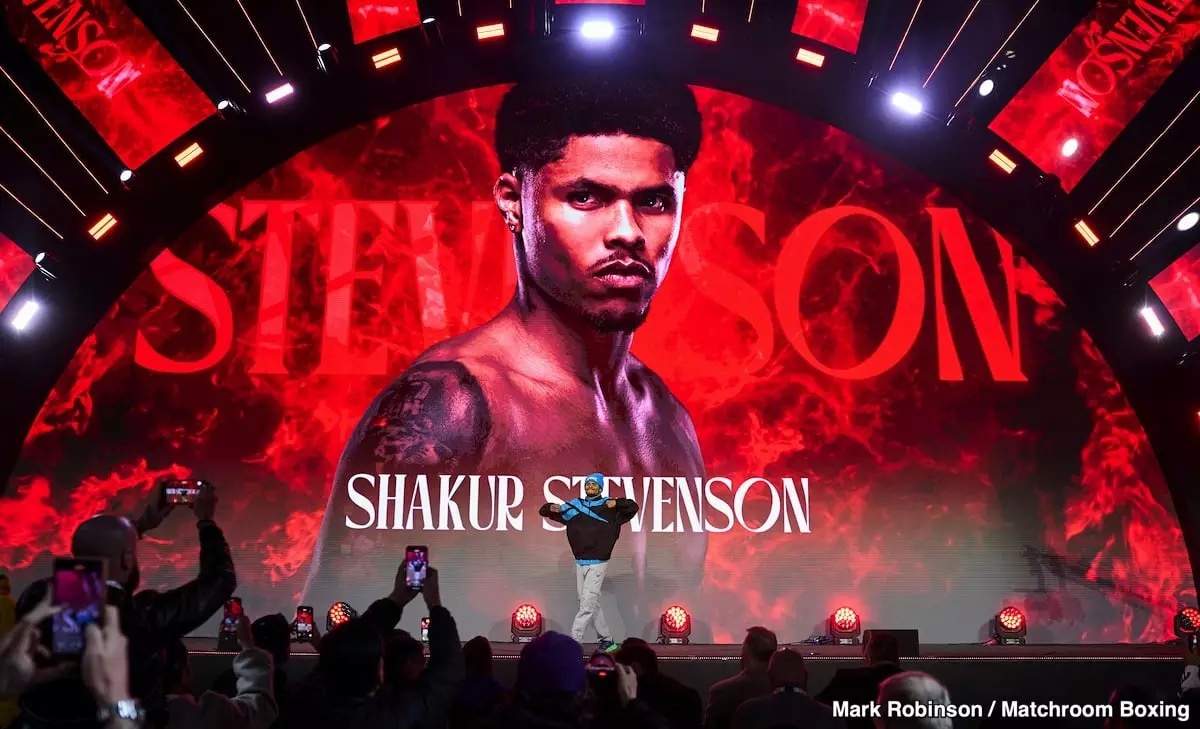In the high-stakes world of boxing, unexpected twists can shape the trajectory of a fighter’s career. Shakur Stevenson, who made a name for himself with his sharp boxing skills, finds himself grappling with disappointment following Vasily Lomachenko’s reluctance to step into the ring against him. Having moved to the lightweight division two years ago, Stevenson had hoped to clash with the illustrious former three-division world champion. Instead, what he perceives as a “duck” weighs heavily on his spirit, overshadowing the awe he once felt for Lomachenko.
The reality is bittersweet: Lomachenko’s career has been an inspiration for many young boxers, and Stevenson was no exception. Lombacheno’s decision to eschew a bout with Stevenson appears as both a personal affront and a missed opportunity for fans craving a heated contest in the ring. As a fighter who dominated in numerous divisions, Lomachenko’s failure to engage with Stevenson has raised eyebrows, making one wonder if he sees Stevenson as more of a threat than a contender.
The Popularity Conundrum
When Lomachenko declined the fight, one underlying factor loomed large: popularity. Two years ago, Stevenson wasn’t yet the household name he is becoming. He was, dare we say, an unpolished diamond in a sport filled with glimmering stars. For seasoned fighters like Lomachenko, generating interest in a fight often dictates whether they take it or not; Shakur’s rising star simply couldn’t compete with the established reputation of fighters like Tank Davis or Lomachenko at that time. Lomachenko’s reluctance might stem from evaluating risk and reward—he might have seen Stevenson as an unproven opponent without the fanfare that could justify a bout.
Now, even after Stevenson’s impressive performances, his visibility in the sport remains relatively low. His recent fight against Josh Padley was buried on an undercard, raising questions about his potential to draw crowds. This visibility—or lack thereof—has implications not just for Stevenson’s career but illustrates the broader power dynamics in boxing. Stepping into the ring is as much about skill as it is about marketability.
The Age Factor
Moving forward, fans must contend with the reality that age is an undeniable factor in the ring. Lomachenko, now 37, has experienced the wear and tear that comes with a decades-long boxing career. Despite showing flashes of brilliance—like his recent bout against George Kambosos Jr.—it’s clear that age and injury have begun to diminish his capabilities. The looming question is whether Lomachenko, despite his accolades, still possesses the fire and stamina to fend off a younger challenger like Stevenson.
While Stevenson’s technical prowess has earned him accolades as a two-time Olympic gold medalist, there remains a palpable gap in their offensive styles. Lomachenko’s intricate movements and striking power create a formidable wall that could potentially stifle Stevenson’s defensive strengths. As Stevenson has expressed in various interviews, this underlying fear of being outmatched lingers.
A Clash of Generations: The Fight for Legacy
One cannot help but feel that the potential fight between Stevenson and Lomachenko transcends mere competition; it embodies a clash of generations. For Stevenson, Lomachenko represents an idol, a mentor who has paved the way for aspiring boxers. The disappointment arising from Lomachenko’s hesitance to engage does not solely stem from a desire to prove himself—rather, it’s also a longing for validation from a fighter he once admired.
When Stevenson admits disappointment in Lomachenko’s decisions, it reveals a deeper narrative of mentorship and respect that, at its core, speaks to the future of boxing itself. Would a bout with Lomachenko serve merely as a stepping stone for Stevenson, or could it mark a significant shift in the boxing landscape?
In this gripping saga, one thing is certain: each fighter has a legacy at stake, and the decisions they make today will echo in the annals of boxing history. Whether fans get to see these two titans square off remains to be seen, but the emotional stakes for Stevenson are undeniably high.

